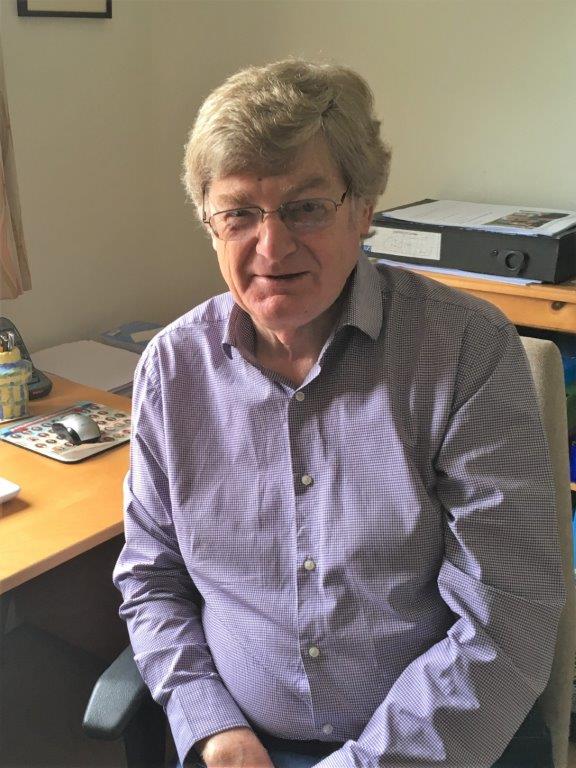4 November 2021
Fussing about fusion and fission
By Paul Branch

Now that COP26 is finally with us, climate change discussions are starting to heat up among the 25,000 earnest souls gathered in Glasgow to determine our future on this planet. It turns out, thankfully, that amongst that throng there are just five negotiators or deal makers who can really make a difference and actually get things done: a gentleman from China much versed in climate matters, another from Saudi entrusted by many Arab countries to look after their interests, a very experienced lady from Bangladesh representing those countries most vulnerable to climate change, a younger Spanish lady with an impressive ecological track record, and the Briton in the middle, our own Alok Sharma, tasked with bringing everything together. That team in itself brings hope that there is a grand (if still somewhat vague) plan to make it all end happily before the century is out.
At the start of the proceedings this week with all the leaders in attendance (bar Messrs Putin and Xi unavoidably detained at home for reasons of the pandemic or couldn’t get a visa in time) we saw and heard predictable bouts of handwringing and platitudes from some of the esteemed delegates, not least our own. Alok Sharma was quick off the mark with his opening delivery as chairman of the proceedings – “we need one point five to stay alive” …. brilliant, especially as China seems to have given up on the 1.5 degrees target. Followed by a sideways allusion to those we need to respect and work with to get a solution to our predicament: “Where Paris promised, Glasgow delivers”. Good stuff, but the signs are that India would like to delay delivery of net-zero to 2060. Next up Boris himself with a volley of verbiage – “it’s past one minute to midnight on the Doomsday clock”, “we need to get serious about climate change”, and “COP26 has to be the beginning of the end of climate change.” One wonders what audience these people are playing to when they apparently feel such a strong need to restate the bleeding obvious. At least the UN Secretary General, Antonio Gutierres, was a bit more down to earth with his plea to “stop treating nature like a toilet”.
But although the heads of state have now gone home, having at least come to some useful agreements on deforestation (again) and methane release, the conference has a way to go yet under the guidance of Mr Sharma and his team. The absence of Vlad Putin and Xi Jinping indicated that they didn’t think much would be achieved at this COP, and gives credence to the view that this is just a preliminary to the real thing, COP27 in Egypt next year, where the exotic venue will be Sharm El Sheikh, almost as glitzy as Glasgow. But Glasgow has achieved a positive step, albeit still a tentative one.
Away from the sense of obfuscation and dithering that pervaded elements of COP26, we can at least draw a little encouragement and hope for the future from some of the developments aimed at helping to wean us off fossil fuels. Many are of the opinion that the answer lies in nuclear technology, but of course there’s an argument about which form this should take, either nuclear fission available today or to try and realise the potential of nuclear fusion.
It may help to briefly remind ourselves of the principles and practicalities inherent in nuclear science and how it gets applied in our real world. Both fission and fusion produce massive amounts of energy from atoms through nuclear reactions. Fission occurs when atoms (commonly uranium or plutonium in a nuclear reactor) are split, which releases energy to heat water, generate steam and produce carbon-free energy through a turbine. Fusion slams atoms together (typically hydrogen) to form a heavier atom (helium in this example) and again energy is released, but at a far greater level than with fission – and this by the way is how the Sun works. The advantage of fusion is that there are no nasty radioactive waste products. The problem with fusion is that reactions are difficult to start and then sustain over a significant period of time as it takes tremendous pressure and heat to join the nuclei together.
Fission technology is proven over many decades and is capable of being developed for a range of applications requiring large and small reactors. By now with the experience gained from several sad catastrophes across the globe, the process is controllable within strict bounds of safety so that there should be no excuse for another Fukushima or Chernobyl. The problem remains though of what to do with the inevitable radioactive and toxic waste products, so we’re stuck with them for hundreds of years as they gradually decay. A thought to ponder however might be to launch them into space, perhaps in the direction of the Sun or even to drift further and further out into the ever-expanding cosmos … intuitively it sounds not a great idea from an ecological viewpoint, the cost of the operation would be colossal, and there’s bound to be a calamity or two on the launch pad. But as an interim solution, who knows ..?
Many countries are investigating nuclear fusion, driven by research in the US, EU, Russia and Japan (note the absence of the UK and China). What started in the 1950s as a means of accelerating the arms race seems now to focus on more peaceful purposes, with the cost and complexity of the devices involved more or less forcing international cooperation, which is a nice outcome in itself. Modern fusion technology uses two heavy isotopes of hydrogen, namely deuterium and tritium, to produce four times the energy of an equivalent uranium U-235 fission. Deuterium is available naturally and in large quantity in sea water (30 gm of deuterium from one cubic metre of water) so no problem there, and there’s no toxic waste. The challenge though is to generate the many millions of degrees Centigrade and the high pressure needed to sustain the reaction, with an energy concentration and heat yield for electricity generation at least as good as that of nuclear fission. Currently the power density of fusion needs to improve by orders of magnitude, and the materials used to construct an industrial reactor need to withstand all that heat and pressure — so don’t expect breakthroughs any time soon.
There doesn’t sound like too much good news in all that, but it’s not all doom and gloom. There’s no single alternative clean fuel that will replace the coal and gas that we know and love today, but we have a menu of technologies which together, and eventually, will do the trick. We’ll probably need both nuclear fission and increasingly nuclear fusion once science triumphs on our behalf, as it surely will, but we should also place increasing reliance on wind power, hydrogen and of course solar energy. So well done COP26 for the commitments on stopping deforestation and methane release, but we still need to keep on making a fuss, not just about fancy stuff like nuclear fission and fusion, but to keeping our leaders focused on making realistic commitments and living up to them.
Tile photo by Kunal Shinde on Unsplash


